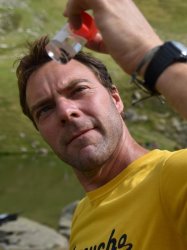BibTex format
@article{Fisher:2018:10.1038/s41598-018-24472-2,
author = {Fisher, MC and Ghosh, P and Shelton, JMG and Bates, K and Brookes, L and Wierzbicki, C and Rosa, GM and Farrer, RA and Aanensen, DM and Alvarado-Rybak, M and Bataille, A and Berger, L and Boell, S and Bosch, J and Clare, FC and Courtois, EA and Crottini, A and Cunningham, AA and Doherty-Bone, TM and Gebresenbet, F and Gower, DJ and Hoglund, J and James, TY and Jenkinson, TS and Kosch, TA and Lambertini, C and Laurila, A and Lin, C-F and Loyau, A and Martel, A and Meurling, S and Miaud, C and Minting, P and Ndriantsoa, S and O'Hanlon, SJ and Pasmans, F and Rakotonanahary, T and Rabemananjara, FCE and Ribeiro, LP and Schmeller, DS and Schmidt, BR and Skerratt, L and Smith, F and Soto-Azat, C and Tessa, G and Toledo, LF and Valenzuela-Sanchez, A and Verster, R and Voeroes, J and Waldman, B and Webb, RJ and Weldon, C and Wombwell, E and Zamudio, KR and Longcore, JE and Garner, TWJ},
doi = {10.1038/s41598-018-24472-2},
journal = {Scientific Reports},
title = {Development and worldwide use of non-lethal, and minimal population-level impact, protocols for the isolation of amphibian chytrid fungi},
url = {http://dx.doi.org/10.1038/s41598-018-24472-2},
volume = {8},
year = {2018}
}

